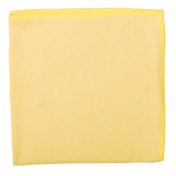We are coming to the end of our flooring series and today we are dealing with natural stone floors. There are many different types and each has different properties. As usual, we will look at the advantages and disadvantages and finally the special cleaning. At the end of the article, as always, we will give a recommendation for the right cleaner.
How is natural stone flooring made?
As the name suggests, natural stone floors are floor coverings made from natural materials . In order to obtain the material for the natural stone tiles, the stone must first be mined. Raw blocks are extracted from quarries, but not all of them are suitable for making floors. Therefore, during mining, care must be taken to ensure that the foundation stone is suitable for further processing. Once the material has been extracted, it must undergo countless processing and finishing processes . The end result is a tile which can then be used as floor or wall cladding. The special thing about natural stone floors is that each tile can be different and is unique . The marbling and structure depends heavily on the weather, age and environmental influences .
What types are there?
The most popular natural stones for living areas are granite, slate, marble, sandstone and limestone (travertine) . Granite is very commonly used and is polishable, durable, easy to maintain and, depending on the type, inexpensive . Sandstone, on the other hand, is mainly found in historic buildings and is rarely used as flooring these days. Cleaning and maintenance are very complicated . Slate is also not ideal as a floor because it is also very time-consuming to maintain. Slate is not recommended, especially in calcareous regions, because the annoying lime residue is unsightly . Limestone, on the other hand, is also a commonly used material for floors. However, limestone has large pores, which also makes cleaning more difficult. Marble is a limestone and is most commonly used as flooring. It is much easier to clean and recondition than granite.
Natural stone is suitable for these rooms
Natural stone floors can be laid in any room , and are even suitable for outdoor use. There is something for every taste, as there are countless color nuances and surface textures. From polished, slightly rough to completely smooth , almost every structure is available. In general, natural stone is very durable and stable , and is therefore suitable for every room. Natural stone can be particularly advantageous in the busier areas of the house, as it does not discolor and does not wear out as quickly as porcelain stoneware. The heat storage capacity means the floor stays nice and warm and in summer it stays cool.
Advantages of natural stone floors
Some of the advantages and disadvantages of natural stone floors have already been mentioned. In this section we will summarise the advantages again. Natural stone creates a warm and comfortable living environment and is sustainable at the same time. No chemicals are used in its production or mining and the floor is ideal for allergy sufferers . Furthermore, natural stone floors are extremely stable and robust . Granite in particular is perfect for heavily used rooms and is easy to maintain. As already mentioned in the previous section, natural stone is suitable for both indoor and outdoor areas . Terraces, garden paths and stairs can be laid here because the stones are not affected by temperature fluctuations. There should only be a gradient of 2 to 3% so that the rainwater can drain away. Another advantageous property is the high thermal conductivity . This makes it possible to install underfloor heating under the floor and in summer the sun's heat is stored. Finally, natural stone floors are slip-resistant and therefore offer a high level of safety .
Disadvantages of natural stone floors
Alongside the many advantages, as with any floor, there are also some negative points. Compared to other types of floor, natural stone is quite expensive , but the investment is worth it as it is very durable. Unlike the floors discussed previously, natural stone flooring is very hard and therefore not particularly gentle on the joints. Furthermore, depending on the type, natural stone flooring can be prone to scratches. Another negative point is the time-consuming cleaning. Stone material is sensitive to acidic and abrasive cleaners , so care must be taken to use special cleaners when cleaning. Regular maintenance is also very important so that dirt does not accumulate in the open-pored structure . Laying it can also become a problem if you do not have the necessary craftsmanship know-how. A few points must be observed to ensure that the floor covering lasts a long time.
How to clean and maintain natural stone floors
There are a few points to consider when cleaning and caring for your dog. Here are a few golden rules for cleaning and caring for your dog:
- Clean the floor thoroughly.
- Apply impregnation to a dry surface, taking into account that each type of stone requires individual impregnation.
- Allow the impregnation to dry thoroughly
- Apply impregnation at a temperature between 10°C and 20°C
- Renew impregnation every 3 to 5 years.
- Do not use a high-pressure cleaner.
- Always follow the manufacturer's care instructions
- Generally use pH-neutral cleaners, as the acid can damage the stone
Mundizio therefore recommends: DURO STONE natural and artificial stone cleaner from Dreiturm
The natural and artificial stone cleaner DURO STONE from Dreiturm is ideal for cleaning. A gentle cleaner without any regreasing or film-forming substances with an optimal shine-preserving cleaning effect. The surfaces cleaned with DURO STONE dry quickly, without residue, streaks or smears . Ideal for cleaning all artificial and natural stone floors such as granite, marble, tiles and many others.
All blog posts about the flooring series at a glance
- cork
- Carpet
- PVC
- Linoleum
- parquet
- laminate
- natural stone
- tiles



